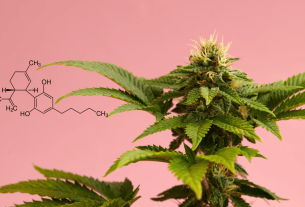The use of cannabis, whether for medicinal or recreational purposes, has become more prevalent, prompting questions about how long the psychoactive component, THC (tetrahydrocannabinol), remains detectable in the human body. Understanding the factors that influence THC detection can be crucial, especially for individual’s subject to drug testing or those seeking to manage their cannabis consumption responsibly.
Metabolism Matters: Individual Variability
One of the primary factors influencing how long THC stays detectable in the body is individual metabolism. Each person’s metabolism processes substances at a unique rate, impacting how quickly or slowly THC is broken down and eliminated. Factors such as age, weight, overall health, and genetics all contribute to this metabolic variability.
Generally, THC is metabolized into compounds known as metabolites, with the most common being THC-COOH. The detection of THC or its metabolites in drug tests is often used as an indicator of recent cannabis use.
Method of Consumption: Inhalation vs. Ingestion
The method of cannabis consumption influences how quickly THC enters and exits the bloodstream. Inhalation methods, such as smoking or vaping, lead to a rapid onset of effects but also a shorter detection window. In contrast, when cannabis is ingested, as in the case of edibles, the effects take longer to manifest, and THC remains in the system for an extended period.
Edibles, due to their delayed onset and prolonged effects, may result in a longer detection window for THC. Understanding the nuances of different consumption methods is crucial for individuals who may be subject to drug testing and want to manage their cannabis use responsibly.
Body Fat Percentage: A Storage Depot for THC
THC is fat-soluble, meaning it is stored in fat cells throughout the body. Consequently, individuals with higher body fat percentages may experience a longer detection window compared to those with lower body fat. THC is slowly released from fat cells back into the bloodstream, contributing to its prolonged presence in the body.
Maintaining a healthy body weight and staying active can potentially help reduce the duration of THC detection. However, individual factors still play a significant role, and there is no one-size-fits-all solution.
Drug Testing Methods: The Importance of Context
The method used for drug testing is another critical factor influencing how long THC stays detectable. Common drug testing methods include urine tests, blood tests, hair tests, and saliva tests. Each method has its own detection window, with urine tests typically being the most common.
Urine tests can detect THC or its metabolites for varying periods, ranging from a few days to several weeks, depending on factors previously discussed. Hair tests have a longer detection window, while blood and saliva tests are more indicative of recent cannabis use.
Doctor Cannabis: Navigating THC Detection Concerns
For individuals with specific concerns about THC detection, seeking advice from a healthcare professional, or “Doctor Cannabis,” can provide valuable insights. Doctor Cannabis can offer personalized guidance based on individual health factors, patterns of cannabis use, and the type of drug testing involved.
In conclusion, understanding how long THC stays detectable involves considering various factors such as metabolism, frequency and dosage of use, consumption methods, body fat percentage, and the type of drug testing. By acknowledging these factors, individuals can make informed choices about their cannabis consumption and, if necessary, seek guidance from healthcare professionals like arzt cannabis to navigate THC detection concerns responsibly.




